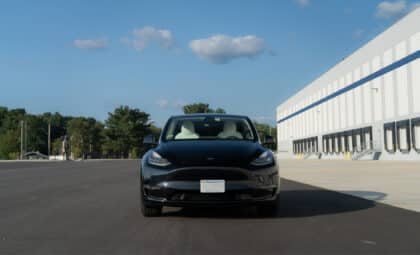China’s electric vehicle (EV) industry is heading into a turbulent phase, according to BYD, the world’s largest EV manufacturer by volume. The company has warned that more than 100 carmakers could be driven out of the market due to mounting government pressure, unsustainable competition, and the aftermath of a price war that has hurt margins across the sector.
Government Crackdown and Overcrowded Market
BYD’s warning follows a regulatory crackdown designed to rein in steep discounting and questionable financing practices that have been defining the sector’s growth over the past few years. Automakers, once buoyed by subsidies and cheap credit, are now facing a much harsher environment characterized by tighter margins, slower demand, and a government determined to impose financial discipline on an overcrowded market.
At the Munich Auto Show, Stella Li, executive vice president of BYD, pointed out that the domestic market had become dangerously oversaturated. She argued that even 20 brands would be too many for the market, emphasizing the deep structural issues that have led many firms to rely on price cuts rather than innovation or economies of scale.
China’s Industrial Strategy Shift
This shift in the industry is part of a broader recalibration of China’s industrial strategy. The country’s focus is no longer on sheer speed or volume but on creating a leaner, more stable market that can compete globally without constant government intervention. For smaller automakers, survival will depend on whether they can adapt to this reality—or exit the market altogether.
Over the past decade, China transformed itself into the epicenter of global EV manufacturing, accounting for nearly 60% of all electric vehicles sold worldwide in 2023, according to the International Energy Agency (IEA). The country’s aggressive policy support, combined with a rush of private capital, led to an explosion in the number of new brands entering the market—more than 120 by 2024. Many of these brands focused on offering low-cost models at steep discounts to win over price-conscious consumers.
The Consequences of Price Wars
However, the initial growth of the market is now showing signs of excess. EV prices in China fell by over 13% year-over-year in early 2024, not because of efficiency gains but due to fierce price wars that squeezed profits across the industry, according to data from JATO Dynamics. The result is a hyper-competitive market where scale alone no longer guarantees survival.
Government’s Response
In response to these challenges, China’s Ministry of Industry and Information Technology began cracking down in early 2025 on unsustainable business practices such as extended supplier payment terms and deep discounting. Regulators introduced the term “neijuan” to describe a self-destructive competition model, where companies undercut each other to the point of destroying value. The aim of the government’s regulatory changes is to restore order and curb the excessive internal competition within the sector.
This shift in tone has already rippled through the industry. A recent report from AlixPartners forecasts that only around 15 EV makers in China will remain financially viable by 2030. For smaller firms, particularly those without international reach or deep financial reserves, the path forward is narrowing rapidly.
Overseas Expansion Amidst Domestic Challenges
Facing market saturation at home, many Chinese EV companies are now looking to expand internationally. BYD, which sold 4.3 million vehicles in 2024, is ramping up its presence in Europe, with a new manufacturing plant in Hungary and a lineup of affordable EVs aimed at price-sensitive buyers in markets like the UK and Germany. Other Chinese firms, such as Leapmotor and Changan Auto, are forming joint ventures to produce vehicles in Spain and Eastern Europe.
While international expansion offers an avenue for growth, it comes with its own set of complications. Chinese companies face regulatory hurdles, brand skepticism, and growing geopolitical tensions in foreign markets. Still, global expansion remains one of the few viable strategies for Chinese automakers looking to diversify away from a slowing domestic market.
Revised Sales Projections
The challenges of the domestic market have led to a revision of sales projections. Citi Research recently slashed its forecast for BYD’s 2025 sales, reducing the estimate from 5.8 million units to 4.6 million units, with further reductions possible if regulatory tightening continues or global demand falters. Even for an industry leader like BYD, profitability is becoming harder to defend.
Long-Term Industry Implications
Despite the immediate challenges, many industry analysts argue that the wave of consolidation could benefit the industry in the long run. Market rationalization, they suggest, could lead to improvements in product quality, greater investment in battery technology, and better charging infrastructure—areas where Chinese brands must compete globally, not just on price.
A recent paper from the China Automotive Technology and Research Center (CATARC) notes that this period of industry consolidation could push companies to focus on long-term investments in battery systems, software development, and vehicle performance to compete in global markets. As the industry matures, it will likely see fewer players, but those remaining will be stronger, more innovative, and better positioned for competition beyond China.









